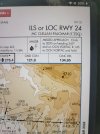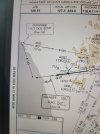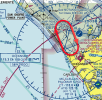ahmad
Pre-takeoff checklist
I'm looking at the missed approach procedures for the ILS24 at KCRQ.
climb to 3000 of heading 245 and OCN 145 to OCN and hold. There's no holding pattern depicted on the chart. So, how and where exactly over OCN do you hold? Will the holding instructions be issued by approach since its not depicted on the chart?

climb to 3000 of heading 245 and OCN 145 to OCN and hold. There's no holding pattern depicted on the chart. So, how and where exactly over OCN do you hold? Will the holding instructions be issued by approach since its not depicted on the chart?



